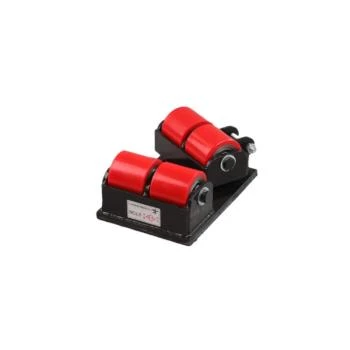machinery relocation
The Essentials of Machinery Relocation A Comprehensive Guide
In today’s fast-paced industrial environment, machinery relocation is a task that many businesses face—whether it’s moving equipment for an expansion, reconfiguration of the production line, or transferring machinery to a new facility. Effective machinery relocation requires careful planning, consideration, and execution to ensure minimal disruption to operations and the safety of both the equipment and personnel involved.
Planning the Relocation Process
The first step in any machinery relocation project is thorough planning. This involves assessing the machinery that needs to be moved, determining the new location, and evaluating any logistical challenges that may arise during the process. A complete inventory of the machinery should be taken, noting the specifications, weight, and any special handling instructions required.
It’s crucial to engage with experienced engineers and technicians who can analyze the current setup and the new location. They can provide insights into how to dismantle and reassemble the machinery safely and efficiently. Additionally, they can help identify potential hazards during the relocation process, such as narrow doorways, staircases, or uneven flooring, which could pose risks to both the equipment and workers.
Securing the Right Equipment and Resources
Once a relocation plan is in place, the next step is to gather the necessary resources. This includes specialized equipment for moving heavy machinery, such as forklifts, cranes, and dollies. Depending on the size and type of machinery, additional tools such as slings, hoists, and rigging gear may also be required.
It’s essential to hire experienced riggers and movers who are trained in handling large and delicate equipment. They understand the intricacies of machinery relocation and have the skills to navigate any challenges that may arise during the move. Before starting the relocation, ensure that all team members are briefed on safety protocols and procedures.
Dismantling and Moving the Machinery
machinery relocation

Dismantling the machinery is a critical phase in the relocation process. Proper procedures must be followed to avoid damaging components or voiding warranties. Each piece of equipment should be carefully disassembled, with all parts labeled and documented for easy reassembly. Taking photographs during this step can also serve as a helpful reference later on.
Once the machinery is dismantled, it must be carefully loaded for transport. Proper lifting techniques and equipment should be employed to prevent accidents. It's important to secure all parts adequately to avoid movement during transport, which can cause damage.
Reassembling at the New Location
Upon arrival at the new location, the reassembly phase begins. The documentation and photographs taken during disassembly will be invaluable in ensuring that each piece of machinery is correctly reassembled. It is important to follow manufacturer guidelines closely to avoid misalignment or improper assembly that could lead to operational issues.
After reassembly, thorough testing should be conducted to ensure that the machinery functions as intended. Conducting a series of tests will help identify any issues that may have arisen during the relocation process.
Training and Adjustments
After machinery relocation, providing adequate training for staff on the newly configured equipment is imperative. Changes in the layout might also require adjustments in workflow, which should be communicated clearly to all employees. Continuous monitoring and feedback mechanisms can help identify further improvements to processes post-relocation.
Conclusion
Machinery relocation can be a daunting task, but with proper planning, resources, and skilled personnel, it can be executed effectively. By paying close attention to detail throughout the process—from the initial assessment to reassembly and testing—companies can minimize downtime, ensure safety, and maintain productivity. In an industrial landscape where efficiency drives success, mastering the art of machinery relocation can provide a significant competitive advantage. Properly handled, it can open up new opportunities for growth and innovation within the organization.
-
Unlock Seamless Relocation with Our Heavy Equipment Moving ExpertiseNewsJun.06,2025
-
Unleash Unrivaled Flexibility with Our Adjustable Gantry CraneNewsJun.06,2025
-
Unleash Heavy-Duty Efficiency with Our Industrial Gantry Crane SolutionsNewsJun.06,2025
-
Revolutionize Steel Handling with Our Magnetic Lifter RangeNewsJun.06,2025
-
Master Equipment Mobility with Premium Machinery Mover SolutionsNewsJun.06,2025
-
Elevate Your Material Handling with Magnetic Lifter TechnologyNewsJun.06,2025
-
YS Permanent Lifting Magnets: The Smarter Way to Handle SteelNewsMay.22,2025
